Antennas and Propagation for Wireless Communication Systems, 2nd Edition
Table of Contents
Preface to the First Edition
Preface to the Second Edition
1. Introduction: The Wireless Communication Channel
1.1 Introduction
1.2 Concept of a Wireless Channel
1.3 The Electromagnetic Spectrum
1.4 History
1.5 System Types
1.6 Aims of Cellular Systems
1.7 Cellular Networks
1.8 The Cellular Concept
1.9 Traffic
1.10 Multiple Access Schemes and Duplexing
1.10.1 Frequency Division Multiple Access
1.10.2 Time Division Multiple Access
1.10.3 Code Division Multiple Access
1.11 Available Data Rates
1.12 Structure of this Book
1.13 Conclusion
References
Problems
2. Properties of Electromagnetic Waves
2.1 Introduction
2.2 Maxwell's Equations
2.3 Plane Wave Properties
2.3.1 Field Relationships
2.3.2 Wave Impedance
2.3.3 Poynting Vector
2.3.4 Phase Velocity
2.3.5 Lossy Media
2.4 Polarisation
2.4.1 Polarisation States
2.4.2 Mathematical Representation of Polarisation
2.4.3 Random Polarisation
2.5 Conclusion
References
Problems
3. Propagation Mechanisms
3.1 Introduction
3.2 Reflection, Refraction and Transmission
3.2.1 Lossless Media
3.2.2 Lossy Media
3.2.3 Typical Reflection and Transmission Coefficients
3.3 Rough Surface Scattering
3.4 Geometrical Optics
3.4.1 Principles
3.4.2 Formulation
3.5 Diffraction
3.5.1 Principle
3.5.2 Single Knife-Edge Diffraction
3.5.3 Other Diffracting Obstacles: Geometrical Theory of Diffraction
3.6 Conclusion
References
Problems
4. Antenna Fundamentals
4.1 Introduction
4.2 Principles
4.2.1 What is an Antenna?
4.2.2 Necessary Conditions for Radiation
4.2.3 Near-Field and Far-Field Regions
4.2.4 Far-Field Radiation from Wires
4.3 Antenna Parameters
4.3.1 Radiation Pattern
4.3.2 Directivity
4.3.3 Radiation Resistance and Efficiency
4.3.4 Power Gain
4.3.5 Bandwidth
4.3.6 Reciprocity
4.3.7 Receiving Antenna Aperture
4.3.8 Beamwidth and Directivity
4.3.9 The Friis Formula: Antennas in Free Space
4.3.10 Polarisation Matching
4.4 Practical Dipoles
4.4.1 Dipole Structure
4.4.2 Current Distribution
4.4.3 Radiation Pattern
4.4.4 Input Impedance
4.5 Antenna Arrays
4.5.1 Introduction
4.5.2 Linear and Planar Arrays
4.5.3 The Uniform Linear Array
4.5.4 Parasitic Elements: Uda-Yagi Antennas
4.5.5 Reflector Antennas
4.5.6 Monopole Antennas
4.5.7 Corner Reflectors
4.5.8 Parabolic Reflector Antennas
4.6 Horn Antennas
4.7 Loop Antennas
4.8 Helical Antennas
4.9 Patch Antennas
4.10 Conclusion
References
Problems
5. Basic Propagation Models
5.1 Introduction
5.2 Definition of Path Loss
5.3 A Brief Note on Decibels
5.4 Noise Modelling
5.5 Free Space Loss
5.6 Plane Earth Loss
5.7 Link Budgets
5.8 Conclusion
Reference
Problems
6. Terrestrial Fixed Links
6.1 Introduction
6.2 Path Profiles
6.3 Tropospheric Refraction
6.3.1 Fundamentals
6.3.2 Time Variability
6.3.3 Ducting and Multipath
6.4 Obstruction Loss
6.5 Approximate Multiple Knife-Edge Diffraction
6.5.1 The Deygout Method
6.5.2 The Causebrook Correction
6.5.3 The Giovanelli Method
6.5.4 Test Cases
6.6 The Multiple-Edge Diffraction Integral
6.6.1 Slope-UTD Multiple-Edge Diffraction Model
6.6.2 Test Case: Comparison of Multiple Models
6.7 Diffraction Over Objects of Finite Size
6.8 Other Methods for Predicting Terrain Diffraction
6.8.1 The Integral Equation Model
6.8.2 The Parabolic Equation Method
6.9 Influence of Clutter
6.10 Conclusion
References
Problems
7. Satellite Fixed Links
7.1 Introduction
7.2 Tropospheric Effects
7.2.1 Attenuation
7.2.2 Rain Attenuation
7.2.3 Gaseous Absorption
7.2.4 Tropospheric Refraction
7.2.5 Tropospheric Scintillation
7.2.6 Depolarisation
7.2.7 Sky Noise
7.3 Ionospheric Effects
7.3.1 Faraday Rotation
7.3.2 Group Delay
7.3.3 Dispersion
7.3.4 Ionospheric Scintillation
7.3.5 Summary of Ionospheric Effects
7.4 Satellite Earth Station Antennas
7.5 Conclusion
References
Problems
8. Macrocells
8.1 Introduction
8.2 Definition of Parameters
8.3 Empirical Path Loss Models
8.3.1 Clutter Factor Models
8.3.2 The Okumura-Hata Model
8.3.3 The Cost 231-Hata Model
8.3.4 The Lee Model
8.3.5 The Ibrahim and Parsons Model
8.3.6 Environment Categories
8.4 Physical Models
8.4.1 The Allsebrook and Parsons Model
8.4.2 The Ikegami Model
8.4.3 Rooftop Diffraction
8.4.4 The Flat Edge Model
8.4.5 The Walfisch-Bertoni Model
8.4.6 Cost 231/Walfisch-Ikegami Model
8.5 ITU-R Models
8.5.1 ITU-R Recommendation P.1411
8.5.2 ITU-R Recommendation P.1546
8.6 Comparison of Models
8.7 Computerised Planning Tools
8.8 Conclusion
References
Problems
9. Shadowing
9.1 Introduction
9.2 Statistical Characterisation
9.3 Physical Basis for Shadowing
9.4 Impact on Coverage
9.4.1 Edge of Cell
9.4.2 Whole Cell
9.5 Location Variability
9.6 Correlated Shadowing
9.6.1 Serial Correlation
9.6.2 Site-to-Site Correlation
9.7 Conclusion
References
Problems
10. Narrowband Fast Fading
10.1 Introduction
10.2 Baseband Channel Representation
10.3 The AWGN Channel
10.4 The Narrowband Fading Channel
10.5 When Does Fading Occur in Practice?
10.6 The Rayleigh Distribution
10.7 Distribution of the SNR for a Rayleigh Channel
10.8 The Rice Distribution
10.9 The Nakagami-m Distribution
10.10 Other Fading Distributions
10.11 Second-Order Fast-Fading Statistics
10.11.1 The Doppler Effect
10.11.2 The Classical Doppler Spectrum
10.12 Autocorrelation Function
10.13 Narrowband Mobile Radio Channel Simulations
10.14 Conclusion
References
Problems
11. Wideband Fast Fading
11.1 Introduction
11.2 Effect of Wideband Fading
11.3 Wideband Channel Model
11.4 Wideband Channel Parameters
11.5 Frequency Domain Effects
11.6 The Bello Functions
11.7 Wideband Fading in Fixed Links
11.8 Overcoming Wideband Channel Impairments
11.9 Conclusion
References
Problems
12. Microcells
12.1 Introduction
12.2 Empirical Models
12.2.1 Dual-Slope Model
12.2.2 The Lee Microcell Model
12.2.3 The Har-Xia-Bertoni Model
12.3 Physical Models
12.4 Line-of-Sight Models
12.4.1 Two-Ray Model
12.4.2 Street Canyon Models
12.4.3 ITU-R P.1411 Street Canyon Model
12.4.4 Random Waveguide Model
12.5 Non-Line-of-Sight Models
12.5.1 Propagation Mechanisms and Cell Planning Considerations
12.5.2 Recursive Model
12.5.3 ITU-R P.1411 Non-Line-of-Sight Model
12.5.4 Site-Specific Ray Models
12.6 Discussion
12.7 Microcell Shadowing
12.8 Narrowband Fading
12.9 Wideband Effects
12.10 Conclusion
References
Problems
13. Picocells
13.1 Introduction
13.2 Empirical Models of Propagation within Buildings
13.2.1 Wall and Floor Factor Models
13.2.2 Cost231 Multi-Wall Model
13.2.3 Ericsson Model
13.2.4 Empirical Models for Wireless Lan
13.2.5 Measurement-Based Prediction
13.3 Physical Models of Indoor Propagation within Buildings
13.3.1 Ray-Tracing Models for Picocells
13.3.2 Reduced-Complexity UTD Indoor Model
13.3.3 Propagation between Floors
13.3.4 Propagation on Single Floors
13.4 Models of Propagation into Buildings
13.4.1 Introduction
13.4.2 Measured Behaviour
13.4.3 Cost231 Line-of-Sight Model
13.4.4 Floor Gain Models
13.4.5 Cost231 Non-Line-of-Sight Model
13.4.6 Propagation Mechanisms
13.5 Constitutive Parameters of Building Materials for Physical Models
13.6 Shadowing
13.7 Multipath Effects
13.8 Ultra-Wideband Indoor Propagation
13.9 Propagation in Tunnels and other Enclosed Spaces
13.9.1 Measured Behaviour
13.9.2 Models of Tunnel Propagation
13.10 Discussion
13.11 Distribution Systems for Indoor and Enclosed Space Applications
13.11.1 Distributed Antenna Systems - General Considerations
13.11.2 Passive Distributed Antenna Systems
13.11.3 Active Distributed Antenna Systems
13.11.4 Hybrid Systems
13.11.5 Radiating Cables
13.11.6 Repeaters
13.11.7 Digital Distribution
13.11.8 Selecting the Most Appropriate Distribution System
13.12 Indoor Link Budgets
13.13 Conclusion
References
Problems
14. Megacells
14.1 Introduction
14.2 Shadowing and Fast Fading
14.2.1 Introduction
14.2.2 Local Shadowing Effects
14.2.3 Local Multipath Effects
14.3 Empirical Narrowband Models
14.4 Statistical Models
14.4.1 Loo Model
14.4.2 Corazza Model
14.4.3 Lutz Model
14.5 Shadowing Statistics
14.6 Physical-Statistical Models for Built-up Areas
14.6.1 Building Height Distribution
14.6.2 Time-Share of Shadowing
14.6.3 Time Series Model
14.7 Wideband Models
14.8 Multi-Satellite Correlations
14.9 Overall Mobile Satellite Channel Model
14.10 Conclusion
References
Problems
15. Antennas for Mobile Systems
15.1 Introduction
15.2 Mobile Terminal Antennas
15.2.1 Performance Requirements
15.2.2 Small Antenna Fundamentals
15.2.3 Dipoles
15.2.4 Helical Antennas
15.2.5 Inverted-F Antennas
15.2.6 Patches
15.2.7 Mean Effective Gain (MEG)
15.2.8 Human Body Interactions and Specific Absorption Rate (SAR)
15.2.9 Mobile Satellite Antennas
15.3 Base Station Antennas
15.3.1 Performance Requirements in Macrocells
15.3.2 Macrocell Antenna Design
15.3.3 Macrocell Antenna Diversity
15.3.4 Microcell Antennas
15.3.5 Picocell Antennas
15.3.6 Antennas for Wireless Lan
15.4 Conclusion
References
Problems
16. Overcoming Narrowband Fading via Diversity
16.1 Introduction
16.2 Criteria for Useful Branches
16.3 Space Diversity
16.3.1 General Model
16.3.2 Mobile Station Space Diversity
16.3.3 Handset Diversity Antennas
16.3.4 Base Station Space Diversity
16.4 Polarisation Diversity
16.4.1 Base Station Polarisation Diversity
16.4.2 Mobile Station Polarisation Diversity
16.5 Time Diversity
16.6 Frequency Diversity
16.7 Combining Methods
16.7.1 Selection Combining
16.7.2 Switched Combining
16.7.3 Equal-Gain Combining
16.7.4 Maximum Ratio Combining
16.7.5 Comparison of Combining Methods
16.8 Diversity for Microwave Links
16.9 Macrodiversity
16.10 Transmit Diversity
16.11 Conclusion
References
Problems
17. Overcoming Wideband Fading
17.1 Introduction
17.2 System Modelling
17.2.1 Continuous-Time System Model
17.2.2 Discrete-Time System Model
17.2.3 First Nyquist Criterion
17.3 Linear Equalisers
17.3.1 Linear Equaliser Structure
17.3.2 Zero-Forcing Equaliser
17.3.3 Least Mean Square Equaliser
17.4 Adaptive Equalisers
17.4.1 Direct Matrix Inversion
17.4.2 LMS Algorithm
17.4.3 Other Convergence Algorithms
17.5 Non-Linear Equalisers
17.5.1 Decision Feedback
17.5.2 Maximum Likelihood Sequence Estimator
17.5.3 Viterbi Equalisation
17.6 Rake Receivers
17.7 OFDM Receivers
17.8 Conclusion
References
Problems
18. Adaptive Antennas
18.1 Introduction
18.2 Basic Concepts
18.3 Adaptive Antenna Applications
18.3.1 Example of Adaptive Antenna Processing
18.3.2 Spatial Filtering for Interference Reduction
18.3.3 Space Division Multiple Access
18.3.4 Multiple-Input Multiple-Output Systems
18.4 Optimum Combining
18.4.1 Formulation
18.4.2 Steering Vector for Uniform Linear Array
18.4.3 Steering Vector for Arbitrary Element Positions
18.4.4 Optimum Combiner in a Free Space Environment
18.4.5 Optimum Combiner in a Fading Environment
18.4.6 Implementation of Adaptive Antennas
18.4.7 Adaptive Antenna Channel Parameters
18.5 Multiple-Input Multiple-Output Systems
18.5.1 MIMO Signal Model
18.5.2 MIMO Channel Capacity
18.5.3 Trade-off between Diversity and Capacity for MIMO
18.5.4 Particular STC Schemes
18.5.5 MIMO Channel Modelling
18.5.6 MIMO Channel Models for Specific Systems
18.5.7 Impact of Antennas on MIMO Performance
18.6 Adaptive Antennas in a Practical System
18.7 Conclusion
References
Problems
19. Channel Measurements for Mobile Systems
19.1 Introduction
19.2 Applications for Channel Measurements
19.2.1 Tuning Empirical Path Loss Models
19.2.2 Creating Synthetic Channel Models
19.2.3 Existing Coverage
19.2.4 Design Survey
19.3 Impact of Measurement Inaccuracies
19.4 Signal Sampling Issues
19.4.1 Estimators of the Local Mean
19.4.2 Sampling Rate
19.5 Measurement Systems
19.5.1 Narrowband Channel Sounding
19.5.2 Wideband Channel Measurement Techniques
19.5.3 Other Measurements
19.6 Equipment Calibration and Validation
19.6.1 General
19.6.2 Transmitters
19.6.3 Receivers
19.6.4 Passive Elements
19.7 Outdoor Measurements
19.7.1 General
19.7.2 Measurement Campaign Plan
19.7.3 Navigation
19.7.4 Size and Shape of Area for Averaging
19.7.5 Outdoor Testing Guidelines
19.8 Indoor Measurements
19.8.1 General
19.8.2 Navigation
19.8.3 Selection of Walk Routes
19.8.4 Equipment
19.8.5 Documentation
19.9 Conclusion
References
Problems
20. Future Developments in the Wireless Communication Channel
20.1 Introduction
20.2 High-Resolution Data
20.3 Analytical Formulations
20.4 Physical-Statistical Channel Modelling
20.5 Multidimensional Channel Models
20.6 Real-Time Channel Predictions
20.7 Intelligent Antennas
20.8 Distributed and Ad-Hoc Cell Architectures
20.9 Conclusion
References
Appendix A: Statistics, Probability and Stochastic Processes
A.1 Introduction
A.2 Single Random Variables
A.3 Multiple Random Variables
A.4 Gaussian Distribution and Central Limit Theorem
A.5 Random Processes
References
Appendix B: Tables and Data
B.1 Normal (Gaussian) Distribution
B.2 Error Function
B.3 Fresnel Integrals
B.4 Gamma Function
B.5 Bessel Function
Reference
Abbreviations
Index
A
B
C
D
E
F
G
H
I
J
K
L
M
N
O
P
Q
R
S
T
U
V
W
X
Y
Z
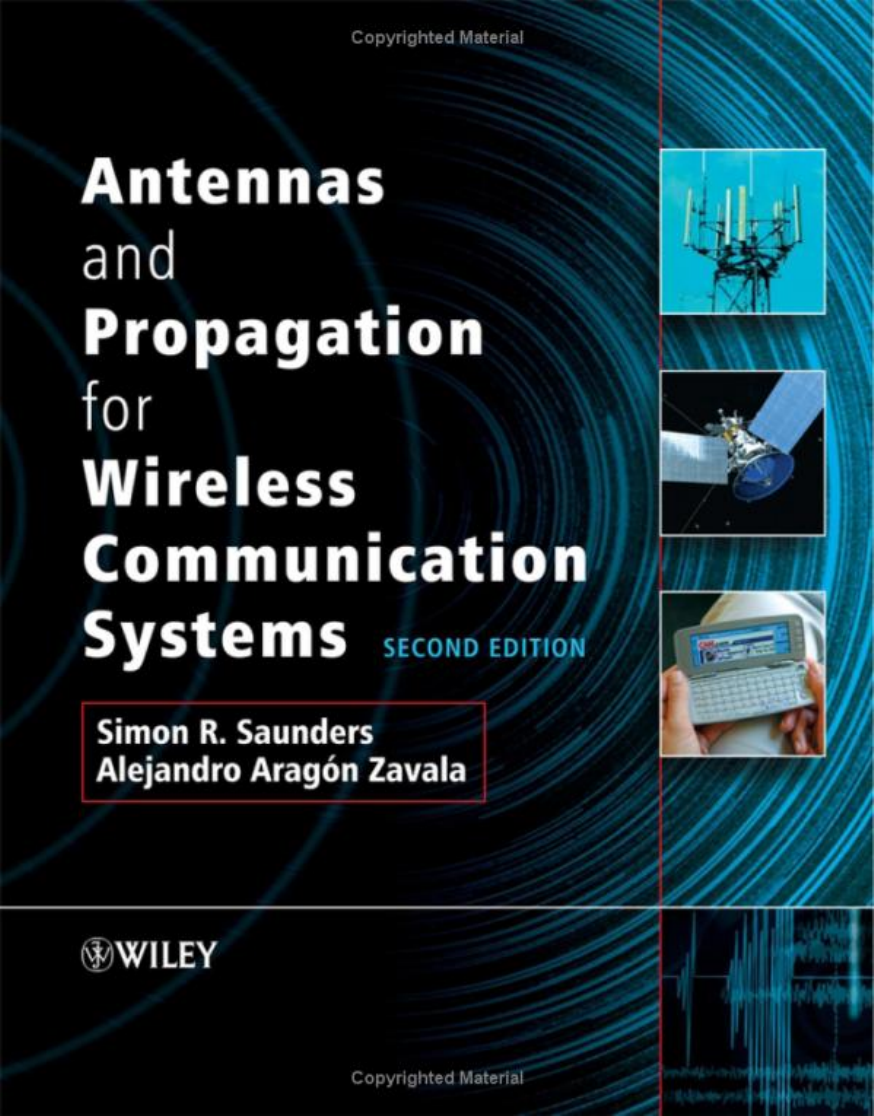
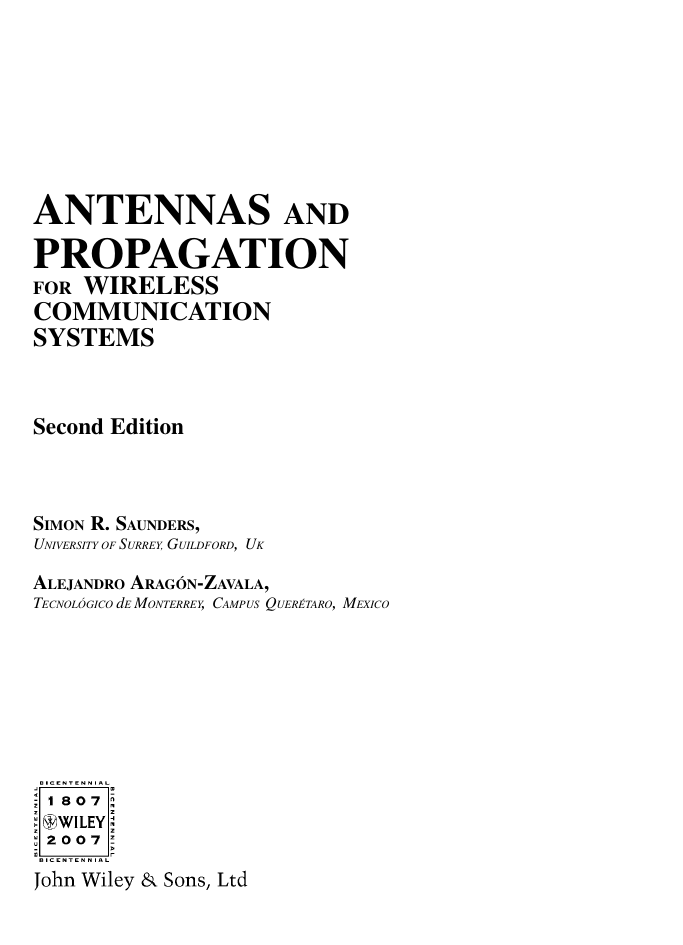
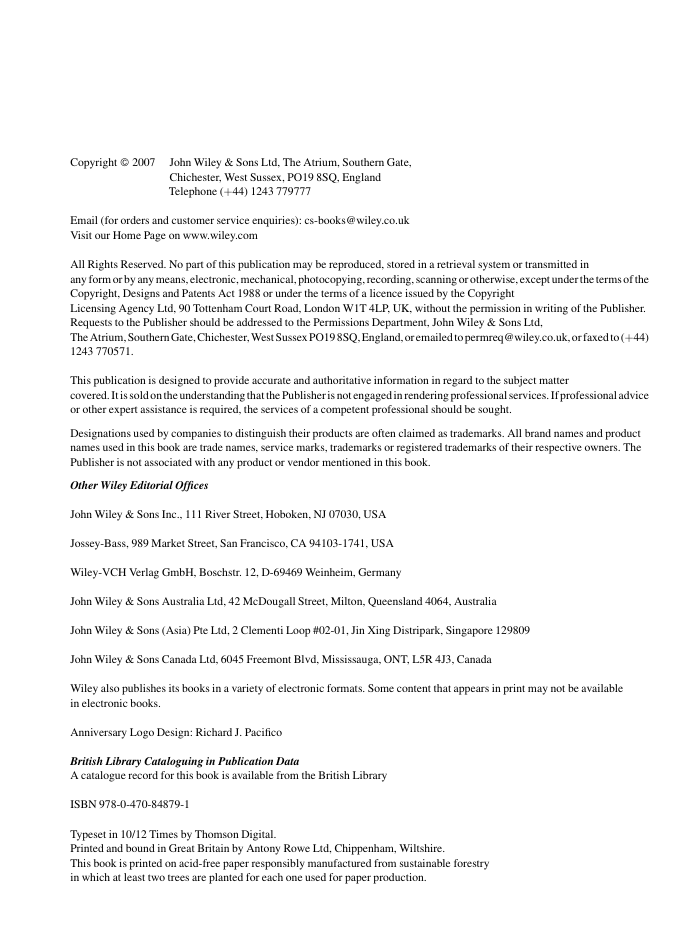
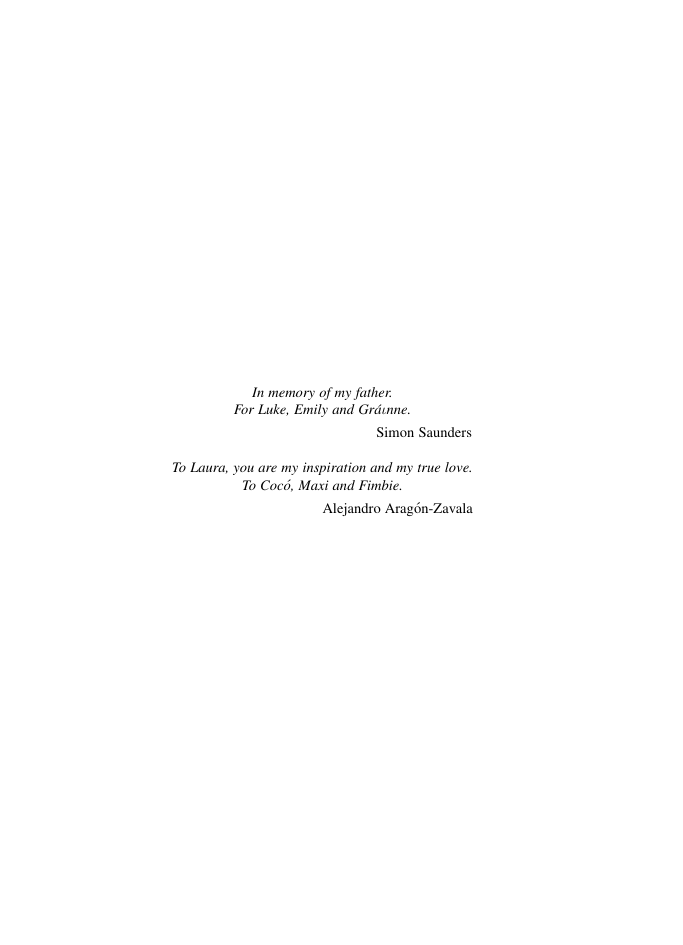

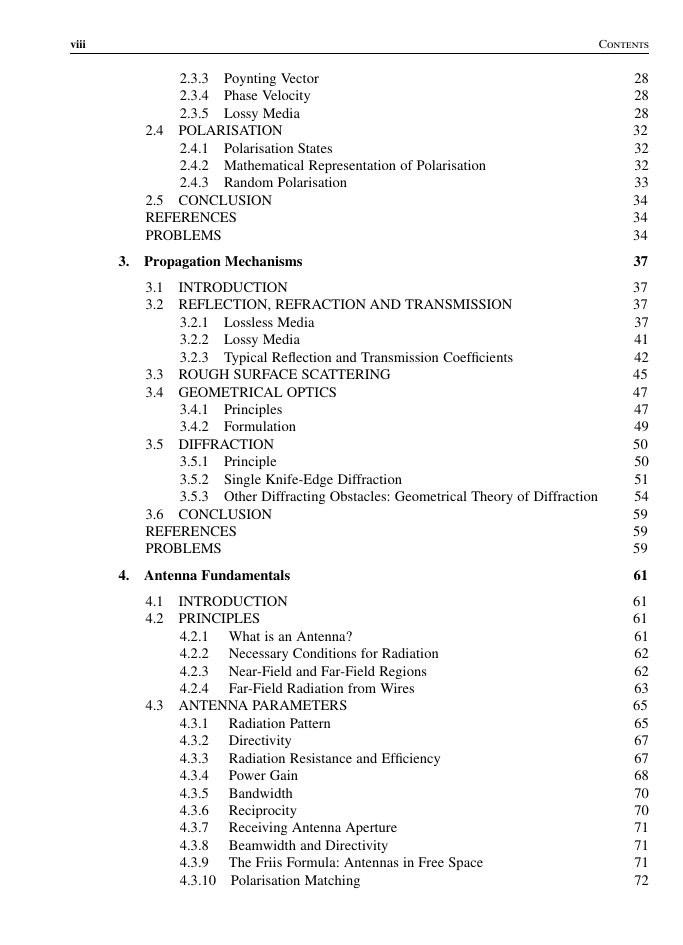
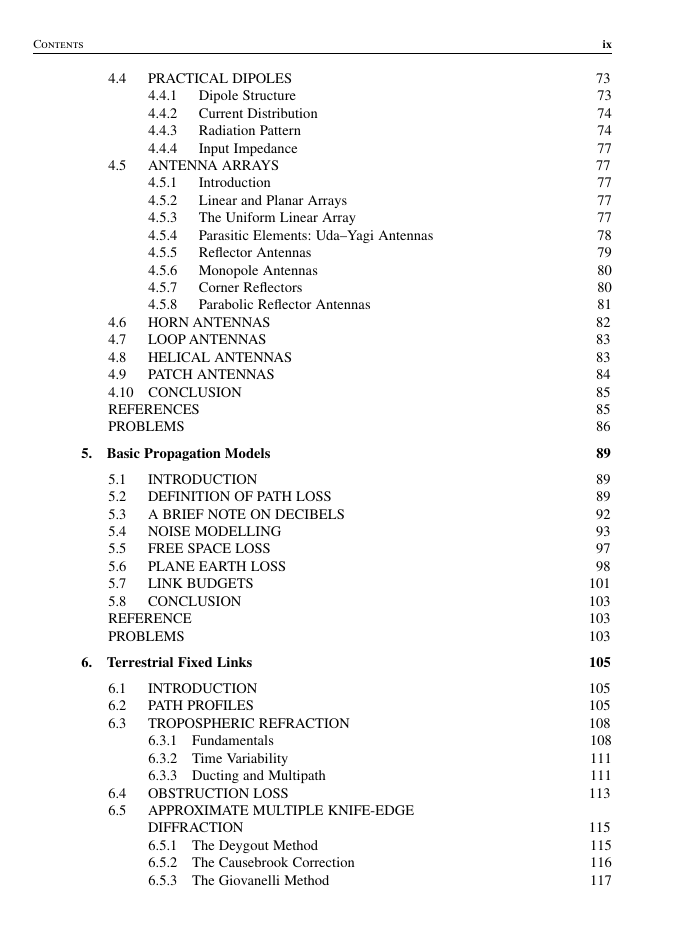
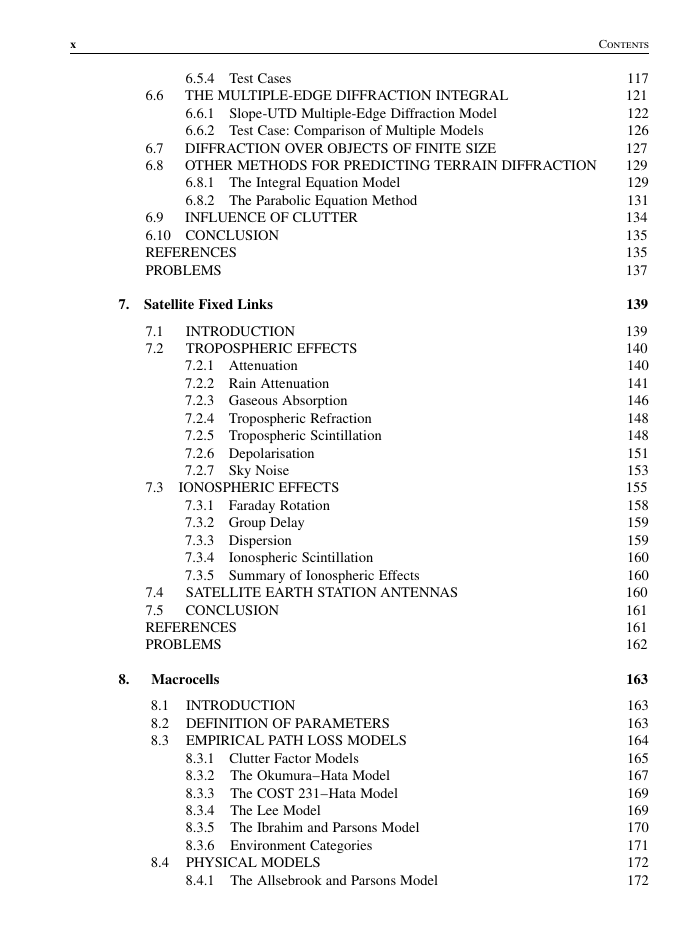








 2023年江西萍乡中考道德与法治真题及答案.doc
2023年江西萍乡中考道德与法治真题及答案.doc 2012年重庆南川中考生物真题及答案.doc
2012年重庆南川中考生物真题及答案.doc 2013年江西师范大学地理学综合及文艺理论基础考研真题.doc
2013年江西师范大学地理学综合及文艺理论基础考研真题.doc 2020年四川甘孜小升初语文真题及答案I卷.doc
2020年四川甘孜小升初语文真题及答案I卷.doc 2020年注册岩土工程师专业基础考试真题及答案.doc
2020年注册岩土工程师专业基础考试真题及答案.doc 2023-2024学年福建省厦门市九年级上学期数学月考试题及答案.doc
2023-2024学年福建省厦门市九年级上学期数学月考试题及答案.doc 2021-2022学年辽宁省沈阳市大东区九年级上学期语文期末试题及答案.doc
2021-2022学年辽宁省沈阳市大东区九年级上学期语文期末试题及答案.doc 2022-2023学年北京东城区初三第一学期物理期末试卷及答案.doc
2022-2023学年北京东城区初三第一学期物理期末试卷及答案.doc 2018上半年江西教师资格初中地理学科知识与教学能力真题及答案.doc
2018上半年江西教师资格初中地理学科知识与教学能力真题及答案.doc 2012年河北国家公务员申论考试真题及答案-省级.doc
2012年河北国家公务员申论考试真题及答案-省级.doc 2020-2021学年江苏省扬州市江都区邵樊片九年级上学期数学第一次质量检测试题及答案.doc
2020-2021学年江苏省扬州市江都区邵樊片九年级上学期数学第一次质量检测试题及答案.doc 2022下半年黑龙江教师资格证中学综合素质真题及答案.doc
2022下半年黑龙江教师资格证中学综合素质真题及答案.doc